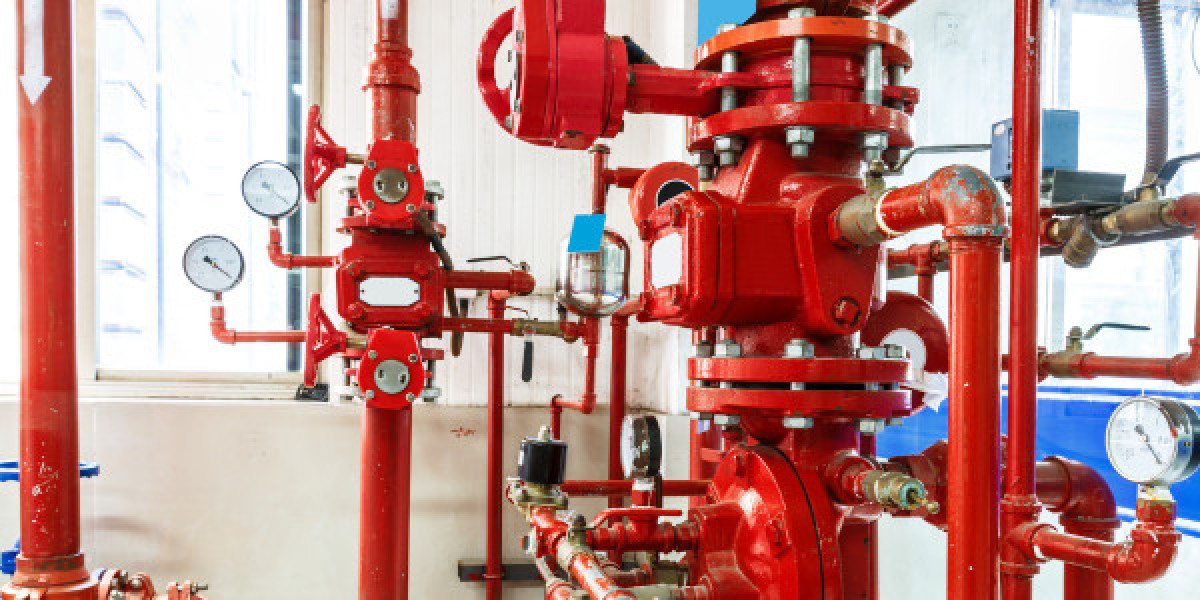Planning, developing, and building fire detection, prevention, and control systems is known as fire protection system design (FPSD). It entails establishing the project's parameters, creating blueprints and drawings, setting up machinery, testing systems, and carrying out recurring checks. The system's efficacy, installation, maintenance, and operation expenses should be considered throughout the design phase.
In addition to meeting applicable code standards, fire prevention systems should be customized to a building’s specific demands. It must be thoroughly tested after design to guarantee dependable performance in an emergency. The system must also be routinely observed and examined to find any issues with its operation.
Building managers and owners should collaborate closely with a certified fire prevention engineer to ensure the systems are correctly constructed and installed. Designing a fire protection system is essential to keeping a secure atmosphere. Working with a skilled professional ensures the system satisfies all safety regulations and protects your building.
When would Designers Require Software Solutions for Fire Protection System Design?
When designing a new construction or renovating an old one, architects usually outsource fire protection system design to access technical software tools and expertise for fire protection systems design. Outsourcing fire protection system design gives designers the resources to make fire safety systems that fulfill all applicable norms, rules, and laws. Also, it helps designers identify possible risks and execute the proper steps to lower fire risk.
The program will help designers understand and develop their ideas by promptly producing precise fire safety system drawings. This enables designers to determine whether their designs comply with local laws and regulations for sprinkler systems, smoke detectors, alarm systems, fire doors, emergency lighting systems, public address systems, and other legally mandated elements. These software programs can also offer recommendations for ergonomic factors like occupant comfort in the case of a fire.
The software can avoid costly mistakes caused by the laborious computations involved in creating a fire safety system from the ground up. By automating the process with accurate fire protection system design calculations based on engineering best practices and code requirements, designers may save time on labor-intensive operations and ensure their designs comply with laws. Before starting construction or system installation, this specialist software may generate comprehensive reports that include labor and material cost estimates.
These reports and drawings can be presented to various regulating bodies for approval. Before the project proceeds, this guarantees that every element satisfies expectations, which benefits all stakeholders by saving time and money.
What are the Essential Elements of A Good Fire Protection System Design?
Fire Detection—This feature uses sensors to identify the presence of smoke or high temperatures and activate an alarm system. It can also notify residents and automatically seal off dangerous areas in a fire.
Containment—This feature entails installing fire-resistant doors and walls that physically separate various parts of the building to help limit the spread of fire.
Suppression—This function uses chemicals, foam, or water to extinguish a fire before it can cause significant damage. Sprinklers and fire extinguishers could also be placed throughout the structure to guarantee that fires are promptly put out.
Emergency Reaction—Besides having emergency procedures to guarantee that building inhabitants leave the building safely and promptly, a well-designed fire protection system should also have enough emergency illumination to provide visibility during a fire evacuation. Alarm systems should also undergo routine testing to ensure they operate correctly.
Final Takeaway
Fire prevention techniques show that fire safety is a dynamic and complex issue rather than a fixed one. Every element is essential to a comprehensive fire safety strategy, from the first warnings of fire alarm systems to the quick action of portable fire extinguishers. Certified technicians ensure systems are prepared for crises.
Customized solutions for various industries highlight the value of a tailored strategy. Purchasing high-quality fire protection equipment is a wise strategic move that protects property and lives and is a moral responsibility. The correct supplier may make all the difference by providing knowledge, all-inclusive services, and collaboration to sustain a safety culture.
It is essential to remember that the actual test of fire safety effectiveness is preventing fires and being ready to handle them when they happen. Let us accept these tactics as essential elements of ethical company ownership and community involvement rather than as a burden.







